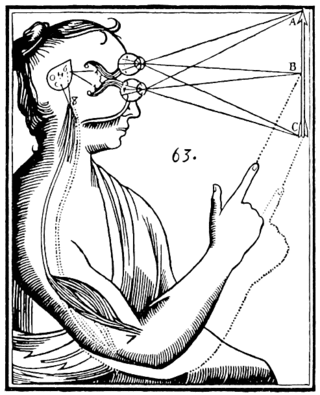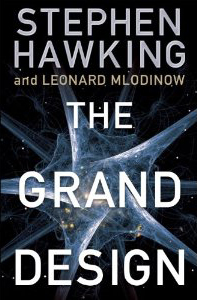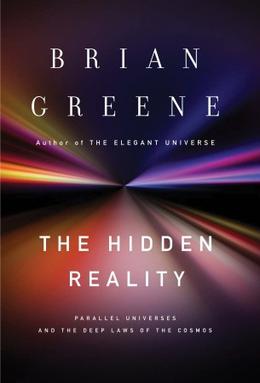
Alternate history is a subgenre of speculative fiction in which one or more historical events have occurred but are resolved differently than in actual history. As conjecture based upon historical fact, alternate history stories propose What if? scenarios about crucial events in human history, and present outcomes very different from the historical record. Some alternate histories are considered a subgenre of science fiction, or historical fiction.

The many-worlds interpretation (MWI) is a philosophical position about how the mathematics used in quantum mechanics relates to physical reality. It asserts that the universal wavefunction is objectively real, and that there is no wave function collapse. This implies that all possible outcomes of quantum measurements are physically realized in some "world" or universe. In contrast to some other interpretations of quantum mechanics, the evolution of reality as a whole in MWI is rigidly deterministic and local. Many-worlds is also called the relative state formulation or the Everett interpretation, after physicist Hugh Everett, who first proposed it in 1957. Bryce DeWitt popularized the formulation and named it many-worlds in the 1970s.

The multiverse is the hypothetical set of all universes. Together, these universes are presumed to comprise everything that exists: the entirety of space, time, matter, energy, information, and the physical laws and constants that describe them. The different universes within the multiverse are called "parallel universes", "flat universes", "other universes", "alternate universes", "multiple universes", "plane universes", "parent and child universes", "many universes", or "many worlds". One common assumption is that the multiverse is a "patchwork quilt of separate universes all bound by the same laws of physics."
Reality is the sum or aggregate of all that is real or existent within the universe, as opposed to that which is only imaginary, nonexistent or nonactual. The term is also used to refer to the ontological status of things, indicating their existence. In physical terms, reality is the totality of a system, known and unknown.
A parallel universe, also known as an alternate universe, parallel world, parallel dimension, alternate reality, or alternative dimension, is a hypothetical self-contained layer or plane of existence, co-existing with one's own. While the six terms are generally synonymous and can be used interchangeably in most cases, there is sometimes an additional connotation implied with the term "alternate universe/reality" that implies that the reality is a variant of our own, with some overlap with the similarly named alternate history.
An observer is one who engages in observation or in watching an experiment.

What the Bleep Do We Know!? is a 2004 American pseudo-scientific film that posits a spiritual connection between quantum physics and consciousness. The plot follows the fictional story of a photographer, using documentary-style interviews and computer-animated graphics, as she encounters emotional and existential obstacles in her life and begins to consider the idea that individual and group consciousness can influence the material world. Her experiences are offered by the filmmakers to illustrate the film's scientifically unsupported ideas.

Quantum mysticism, sometimes referred pejoratively to as quantum quackery or quantum woo, is a set of metaphysical beliefs and associated practices that seek to relate consciousness, intelligence, spirituality, or mystical worldviews to the ideas of quantum mechanics and its interpretations. Quantum mysticism is considered pseudoscience and quackery by quantum mechanics experts.

Robert Lanza is an American medical doctor and scientist, currently Head of Astellas Global Regenerative Medicine, and Chief Scientific Officer of the Astellas Institute for Regenerative Medicine. He is an Adjunct Professor at Wake Forest University School of Medicine.

Far Horizons: All New Tales from the Greatest Worlds of Science Fiction is an anthology of original science fiction stories edited by Robert Silverberg, first published in hardcover by Avon Eos in May 1999, with a book club edition following from Avon and the Science Fiction Book Club in July of the same year. Paperback and trade paperback editions were issued by Eos/HarperCollins in May 2000 and December 2005, respectively, and an ebook edition by HarperCollins e-books in March 2009. The first British edition was issued in hardcover and trade paperback by Orbit/Little Brown in June 1999, with a paperback edition following from Orbit in July 2000.

The simulation hypothesis proposes that what humans experience as the world is actually a simulated reality, such as a computer simulation in which humans themselves are constructs. There has been much debate over this topic, ranging from philosophical discourse to practical applications in computing.

Robert Berman, known as Bob Berman, is an American astronomer, author, and science popularizer. He runs Overlook Observatory in Woodstock, New York, USA. He was an adjunct professor of astronomy at New York’s Marymount College located in Westchester County, from 1996 to 2000 and has appeared on CBS This Morning, the Today Show, and the Late Show with David Letterman.

The Grand Design is a popular-science book written by physicists Stephen Hawking and Leonard Mlodinow and published by Bantam Books in 2010. The book examines the history of scientific knowledge about the universe and explains eleven-dimensional M-theory. The authors of the book point out that a Unified Field Theory may not exist.

The Cosmic Landscape is a non-fiction popular science book on the anthropic principle and string theory landscape. It is written by theoretical physicist Leonard Susskind. The book was initially published by Little, Brown and Company on December 12, 2005.

The Hidden Reality: Parallel Universes and the Deep Laws of the Cosmos is a book by Brian Greene published in 2011 which explores the concept of the multiverse and the possibility of parallel universes. It has been nominated for the Royal Society Winton Prize for Science Books for 2012.
Quantum fiction is a genre of speculative fiction that reflects modern experience of the material world and reality as influenced by quantum theory and new principles in quantum physics. It is characterized by the use of an element in quantum mechanics as a storytelling device. The genre is not necessarily science-themed, and blurs the line separating science fiction and fantasy into a broad scope of mainstream literature that transcends the mechanical model of science and involves the fantasy of human perception or imagination as realistic components affecting the everyday physical world.

Flight: A Quantum Fiction Novel is a novel by American writer Vanna Bonta.

Our Mathematical Universe: My Quest for the Ultimate Nature of Reality is a 2014 nonfiction book by the Swedish-American cosmologist Max Tegmark. Written in popular science format, the book interweaves what a New York Times reviewer called "an informative survey of exciting recent developments in astrophysics and quantum theory" with Tegmark's mathematical universe hypothesis, which posits that reality is a mathematical structure. This mathematical nature of the universe, Tegmark argues, has important consequences for the way researchers should approach many questions of physics.
The multiverse is a series of parallel universes in many of the science fiction and fantasy novels and short stories written by Michael Moorcock. Central to these works is the concept of an Eternal Champion who has potentially multiple identities across multiple dimensions. The multiverse contains a legion of different versions of Earth in various times, histories, and occasionally, sizes. One example is the world in which his Elric Saga takes place. The multiplicity of places in this collection of universes include London, Melniboné, Tanelorn, the Young Kingdoms, and the Realm of Dreams.

Quantum Night is a 2016 science-fiction thriller novel written by Canadian novelist Robert J. Sawyer. Set in 2020, the book touches on themes of quantum physics, psychology, current politics and ethics.















